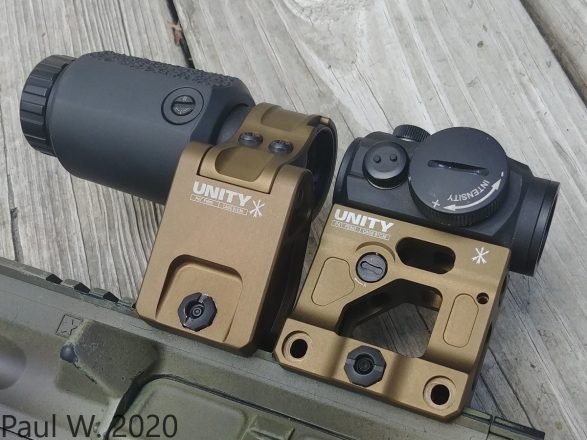
The “Aimpoint” can mean a lot of things to a lot of people. To some, it may bring up memories of a deployment to the Middle East, or make them reminisce over their first deer hunt. It may be the goal to attain for the “right” AR build, or might mean nothing to someone. What exactly is an Aimpoint, or more importantly, who is Aimpoint?
The History of Aimpoint : 1974-1996 (Abridged)
Aimpoint AB was formed in 1974, in the Swedish city of Malmö. The intent of forming the company was simple; To create an effective, rugged, and simple electronic optic that would make quick hunting shots easier to perform. With this, the Aimpoint Electronic red dot sight hit the market in 1975. With that first optic, Aimpoint began their 45 year history of creating red dot optics for various uses.
While Aimpoint was not the first company to create unmagnified optics, they were the first to use an LED emitter. The Light-Emitting Diode is something that we are well aware of in the 21st century, but in 1975, it was cutting edge technology. This was a truly revolutionary change, especially compared to the optics of the time. If you wanted a zero-magnification optic prior to 1975, you were limited to occluded eye optics, or etched reticles. The Aimpoint was a big step up.

As the 1970’s passed on and the 80’s began, Aimpoint did what many companies do, improve on products. The Aimpoint Electronic received a second and third generation, and more optic lines were released. While the early optics were mainly for hunting applications, those of the late 80’s ended up on the tactical rifles of the time. The tubular bodied Aimpoint 2000, 3000, and 5000 all saw limited use on rifles used by special forces members, such as Larry Vickers. One of the big elements of the 2000-5000 series is that they mounted using 30mm scope rings, rather than having a built in Weaver mount. This made the optics much easier to mount to a wider variety of rifles.
This was merely the start of a long service life of Aimpoints with the armed forces…
The History of Aimpoint: 1997-2020 (Abridged)
Aimpoint’s big break was in 1997, when they were awarded a contract to supply the US Army with the CompM2 optic. The Army adopted it as the M68 Close Combat Optic, and it has stayed in service since 97′. The US Army originally placed an order for 100,000 optics, but by 2011, 1 million M68s had been purchased. The rugged optic warranted much respect, due to it’s robust body and mount, and ease of use.

Aimpoint continued to maintain the use of 30mm scope ring mounting optics, however a changing world required new designs. In 2007, Aimpoint launched the Micro line, with the T1, H1, and R1. These abbreviations stood for Tactical, Hunter, and (presumably) Race. This new Micro line was a leap forward, offering the durability and ease of use of the larger Aimpoint red dot optics, but with a smaller size, and longer-lifespan battery. Much like their other lines, the Micro line has received second generation upgrades over the years.
Aimpoint is still putting out new products, most notably the ACRO P1, an optic specially made for use on handguns. A few of us here at Primer Peak use the P1, and that build quality transfers over to any product they make, even if it is two inches long.
What’s the (Aim) Point?
In 2020, there is a lot of competition for what brand of optic you mount to your gun. There are budget, mid-range, and premium brands out there, but I still find merit in going for what I (and many others) perceive to be the best-in-class red dots.
The desire to write this was formed when I realized how many modern optics are “Aimpoint clones”. Many designs from companies like Vortex, Holosun, and SIG are very similar to the optics Aimpoint has produced. For example, the SIG Romeo5 that I reviewed last year is the same form factor and footprint as the Aimpoint Micro. Holosun’s 403/503 lines are also the same style/footprint, and Vortex’s Sparc line is similar, but the most unique of the “clones”. The Vortex Strikefire and Holosun 406/506 are also “clones” of the Aimpoint CompM2/M3 lines.

While none of the above are direct copies of the Aimpoints, they are certainly emulating the look, footprint, and attempting to match the performance of the real deal. This is not to detract from the performance of the copies; many are quite good. However, I wanted to showcase that which got the ball rolling almost a half-century ago.
Over the next few months, I plan on doing write-ups on various Aimpoints from over the lifespan of the company. I wanted to show both the mundane, and unusual optics in my collection. What’s going to be the first one to get the spotlight?
References Used (but not linked above):
https://www.aimpoint.com/about-aimpoint/
https://en.wikipedia.org/wiki/Aimpoint_AB





Be the first to comment